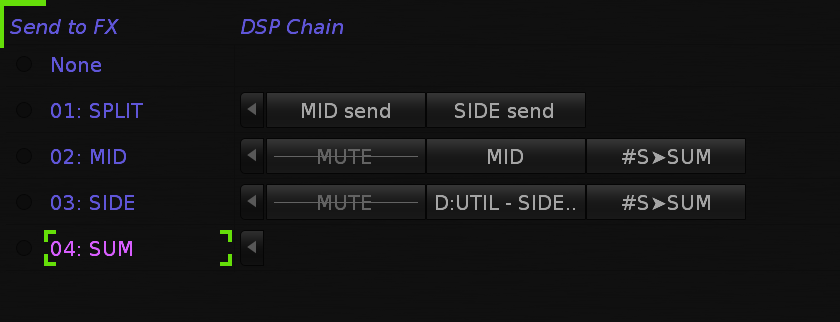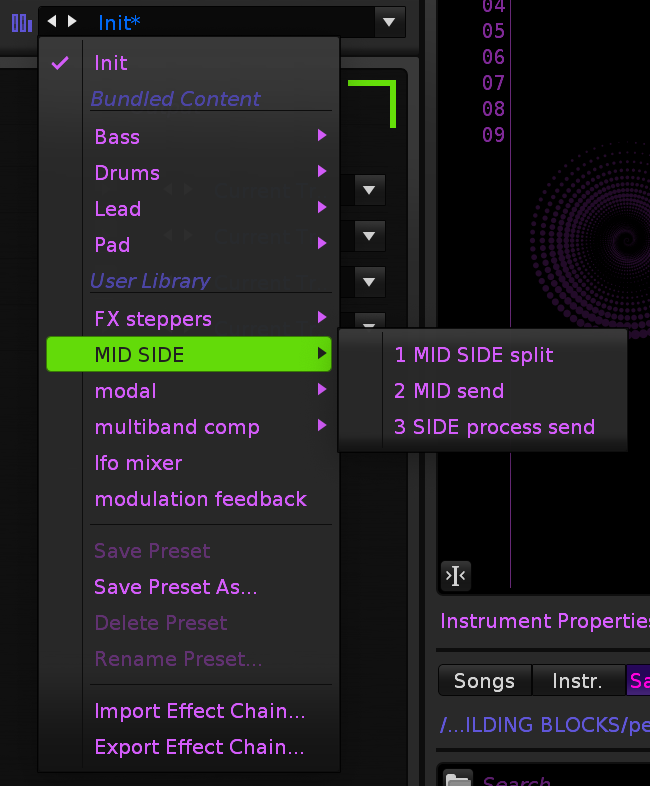here’s how it’s done. credit to user @jneen for figuring out the side processing. check the fx chain on instrument 00 in this xrns, and save the fx chains if you want them. You can insert your own processing after the MID device in the MID chain, and/or after the D:UTIL - SIDE device in the SIDE chain. Happy native MID/SIDE processing. Enable the respective MUTE devices if you want to, well, mute part of it to hear wtf you’re doing ![]()
MID SIDE processing.xrns (4.4 KB)

I save the individual chains and call em up when I need them:

4 Likes